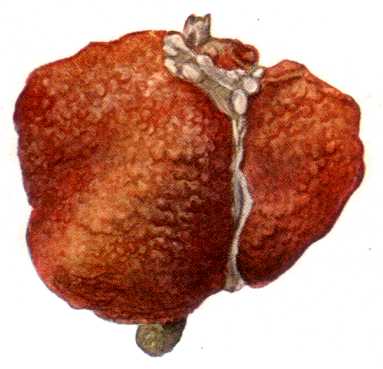Liver Disease
Liver disease, also known as hepatic disease, encompasses a wide range of conditions affecting the liver.
These diseases can be acute or chronic, and while the specific details and causes may vary, many liver diseases share common features.
Types of Liver Diseases

Some of the most common liver diseases include:
- Hepatitis: Inflammation of the liver caused by viruses (e.g., Hepatitis B and C), toxins (e.g., alcohol), autoimmunity, or hereditary conditions.
- Alcoholic Liver Disease: Includes fatty liver disease, alcoholic hepatitis, and cirrhosis resulting from overconsumption of alcohol.
- Fatty Liver Disease: Characterised by the accumulation of triglyceride fat in liver cells. Non-alcoholic fatty liver disease is associated with obesity and metabolic syndrome.
- Hereditary Diseases: Conditions like hemochromatosis and Wilson's disease can cause liver damage. Alpha 1-antitrypsin deficiency and glycogen storage disease type II also affect the liver.
- Primary Liver Cancer: Common forms include hepatocellular carcinoma and cholangiocarcinoma, with many liver cancers being secondary lesions from other primary cancers.
- Primary Biliary Cirrhosis: An autoimmune disease affecting the bile capillaries.
- Budd–Chiari Syndrome: Caused by the occlusion of the hepatic vein.




Signs and Symptoms
Liver disease may present with a variety of signs and symptoms, including:
- Jaundice: A yellowing of the skin and eyes due to elevated bilirubin.
- Hepatic Encephalopathy: Confusion and altered consciousness.
- Thrombocytopenia and Coagulopathy: Increased risk of bleeding, particularly in the gastrointestinal tract.
Mechanisms
Liver diseases can develop through several mechanisms, including increased DNA damage. Viral infections (e.g., Hepatitis B and C), heavy alcohol consumption, and obesity can lead to oxidative stress and inflammation, causing DNA damage and epigenetic alterations. These changes can result in increased cell replication or avoidance of apoptosis, contributing to liver disease and potentially leading to hepatocellular carcinoma.
Other Relevant Aspects
Viral hepatitides can be vertically transmitted during birth. High alcohol consumption leads to various forms of liver disease through the buildup of triglycerides and fatty acids, resulting in inflammation and scarring. Obesity increases the risk of liver cancer due to elevated pro-inflammatory cytokines and deoxycholic acid from gut microbes. Air pollutants, such as particulate matter, also have toxic effects on the liver, causing inflammation and fatty liver disease.
Diagnosis
Liver function tests assess enzyme levels, metabolites, and serum proteins in the blood. Imaging tests like transient elastography, ultrasound, and MRI can visualise liver tissue and bile ducts. Liver biopsies help distinguish between conditions, though elastography may reduce the need for biopsy. In liver disease, prothrombin time is prolonged, and levels of coagulation factors are reduced, except for factor VIII and von Willebrand factor, which increase due to compensatory mechanisms.



Treatment

Treatment depends on the specific liver disease and may include antiviral medications for hepatitis B, steroid-based drugs for autoimmune hepatitis, venesection for hemochromatosis, and copper-binding drugs for Wilson's disease. Ursodeoxycholic acid may be given for cholestatic liver disease. The goal is often to slow disease progression and manage symptoms.
Self-assessment MCQs (single best answer)
Which of the following is NOT a common cause of hepatitis?
What is a common characteristic of non-alcoholic fatty liver disease (NAFLD)?
Which hereditary disease is characterised by excess iron accumulation in the liver?
What is the primary feature of jaundice?
Which imaging test is used to visualise liver tissue and bile ducts?
Which liver condition results from the occlusion of the hepatic vein?
What is the effect of high alcohol consumption on the liver?
Which treatment is specifically used for Wilson's disease?
In liver disease, which coagulation factor levels are NOT reduced?
What is often used to treat cholestatic liver disease?
Dentaljuce
Dentaljuce provides Enhanced Continuing Professional Development (CPD) with GDC-approved Certificates for dental professionals worldwide.
Founded in 2009 by the award-winning Masters team from the School of Dentistry at the University of Birmingham, Dentaljuce has established itself as the leading platform for online CPD.
With over 100 high-quality online courses available for a single annual membership fee, Dentaljuce offers comprehensive e-learning designed for busy dental professionals.
The courses cover a complete range of topics, from clinical skills to patient communication, and are suitable for dentists, nurses, hygienists, therapists, students, and practice managers.
Dentaljuce features Dr. Aiden, a dentally trained AI-powered personal tutor available 24/7 to assist with queries and provide guidance through complex topics, enhancing the learning experience.
Check out our range of courses, or sign up now!


